The best running shoes 2025: Hit the road with our top sneakers and trainers
The best running shoes for interval training, slow runs, racing and more, ranked
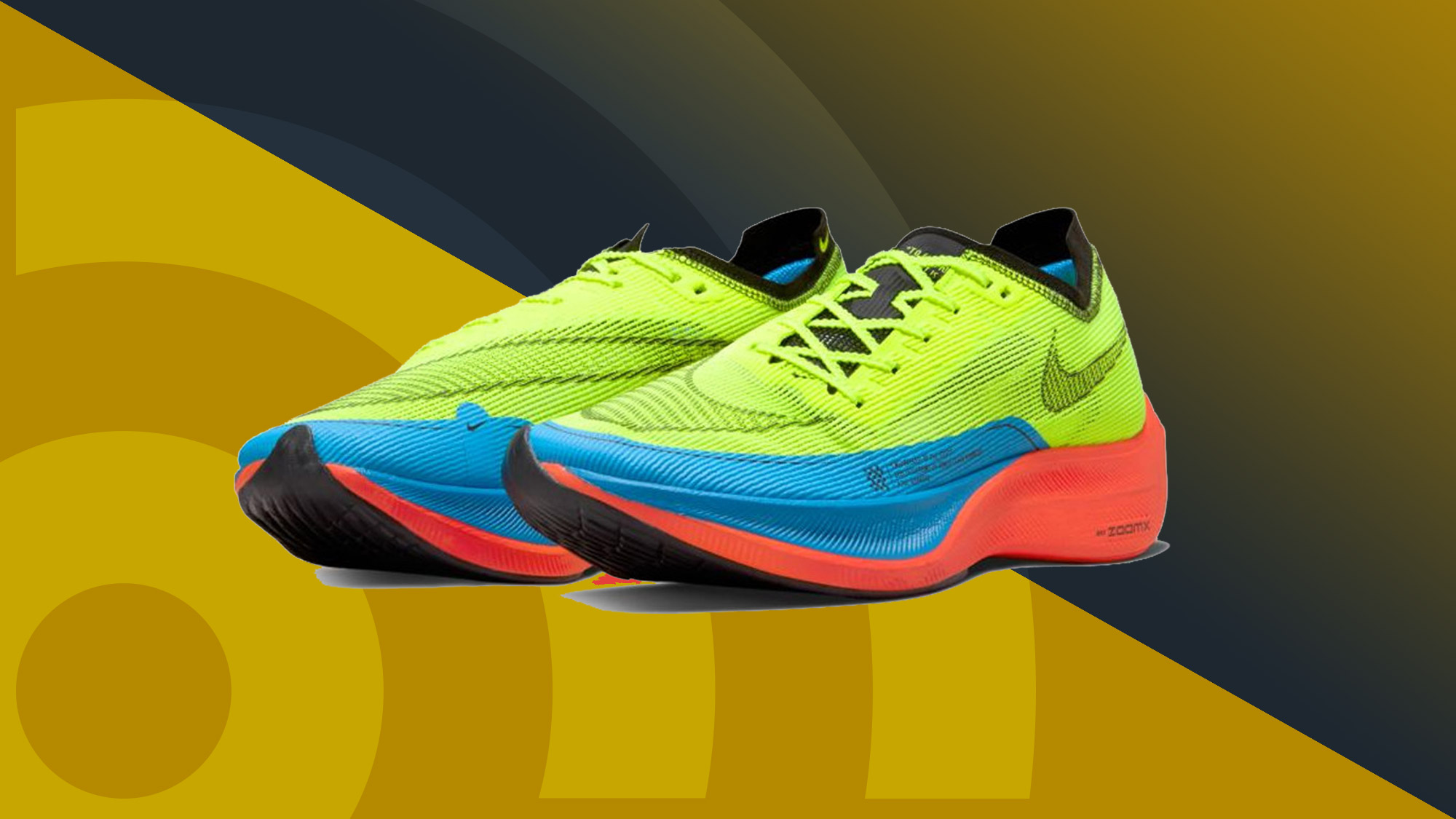
Whether you're looking to crush that marathon PB in 2025, put in more miles on the treadmill, or take up running for the first time in the New Year, then you need a pair of the best running shoes.
If you want to run without getting injured, or you want a more serious shoe to boost your performance, then you need to spend a bit of money and get serious. While a cheap fitness tracker might help you track your mileage and your calories, buying a running shoe is the one place you don't want to skimp. Get the wrong shoe and you risk injury, possibly even long-term.
We've tested the best products on the market to bring you our top picks. Crucially, you won't find a budget pick here, because going cheap is not the answer when it comes to running shoes. We do, however, have picks for our top shoes overall, shoes for slower or longer runs, fast sessions, and a choice for runners who overpronate.
Here are the best running shoes you can buy right now.
The quick list
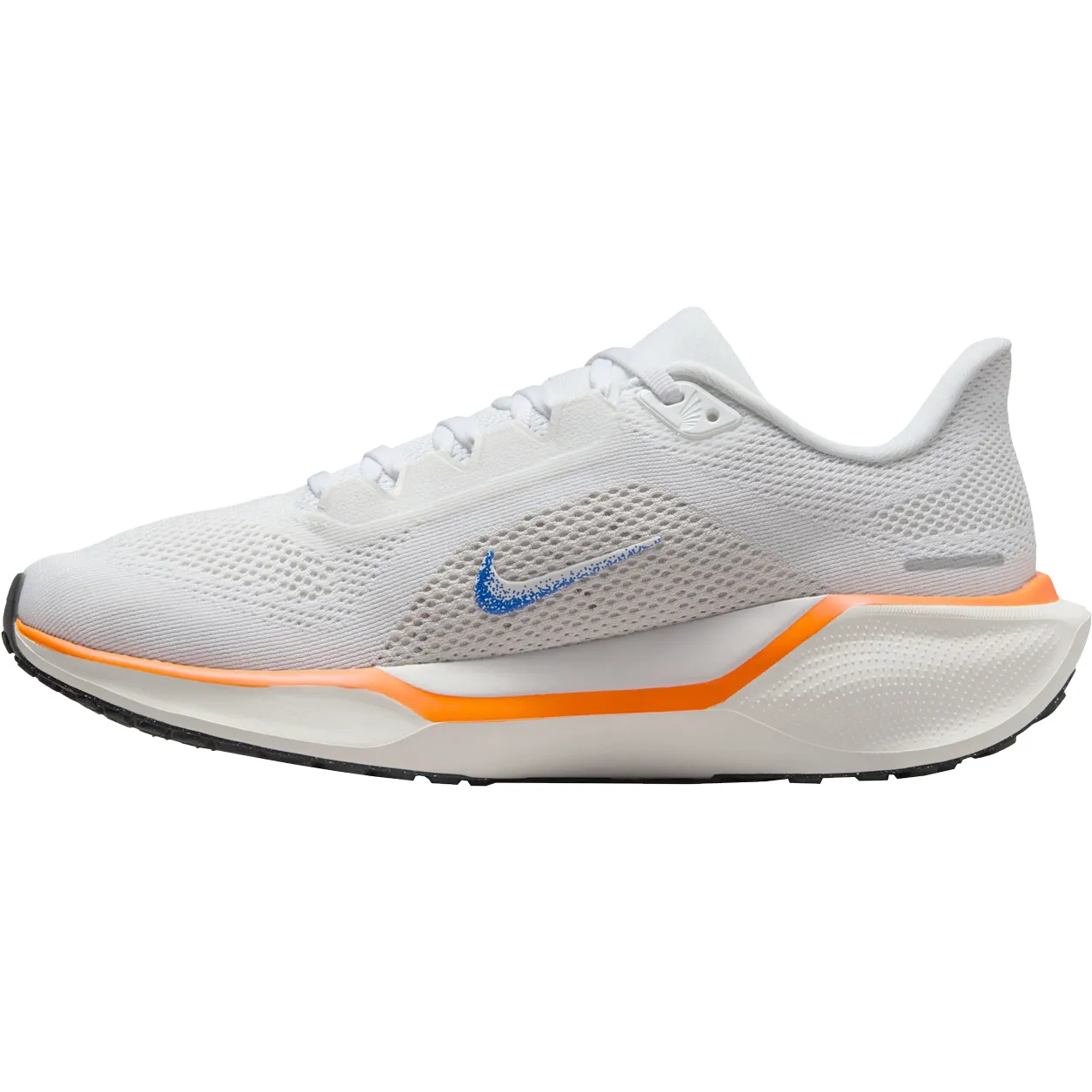 Best overall
Best overall
The best overall
The Nike Pegasus 41 is probably the best all-round running shoe out there, a very inoffensive pick that does a bit of everything. They're comfortable, well made, not too expensive, and stylish.
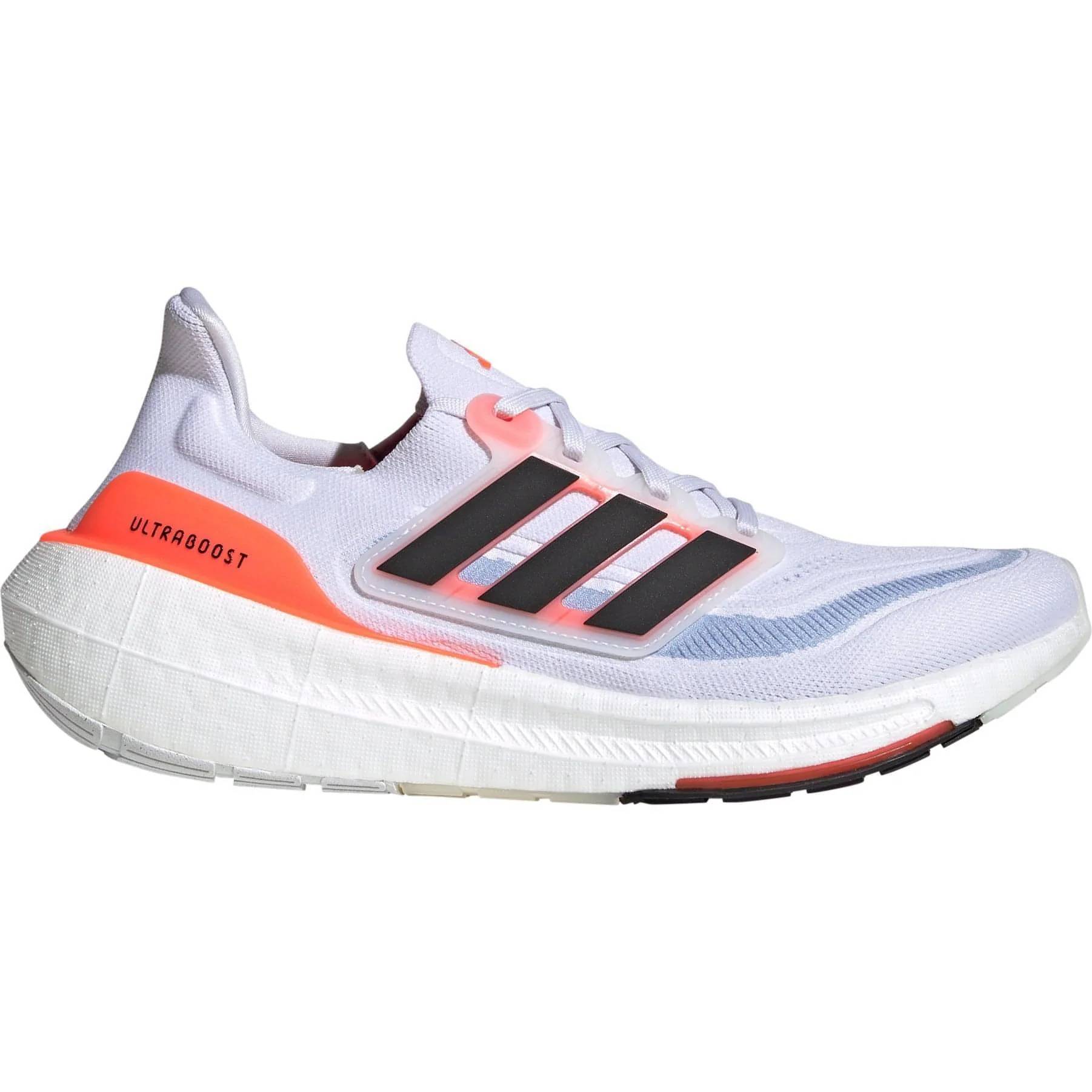
The best for slower runs
Maintain form for longer thanks to this well-made and beautifully designed running shoe from Adidas. Enjoy the integrated cage system that delivers a snug and comfortable fit.
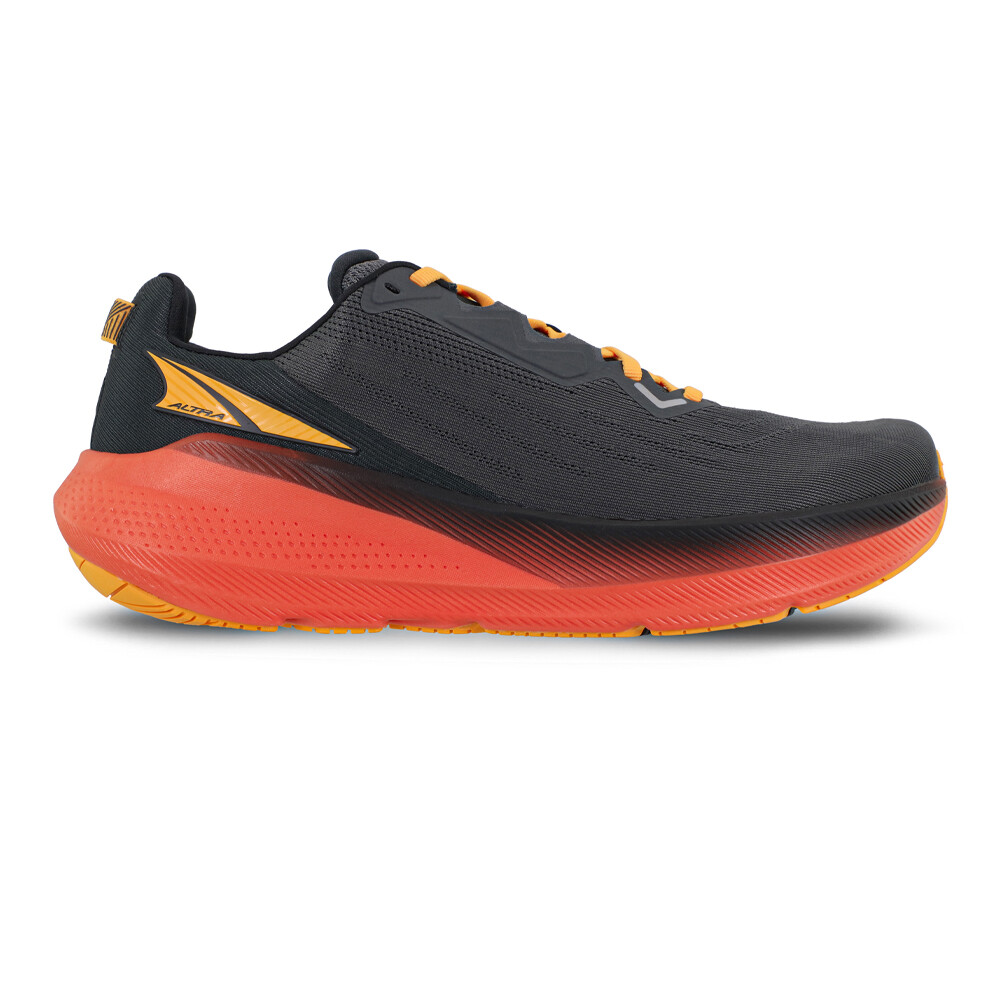
The best for long distance
New for 2025, the Altra FWD Via is chunky and comfortable, with a wide toe box and a rocker motion to help conserve energy. They're perfect for long, slow runs.
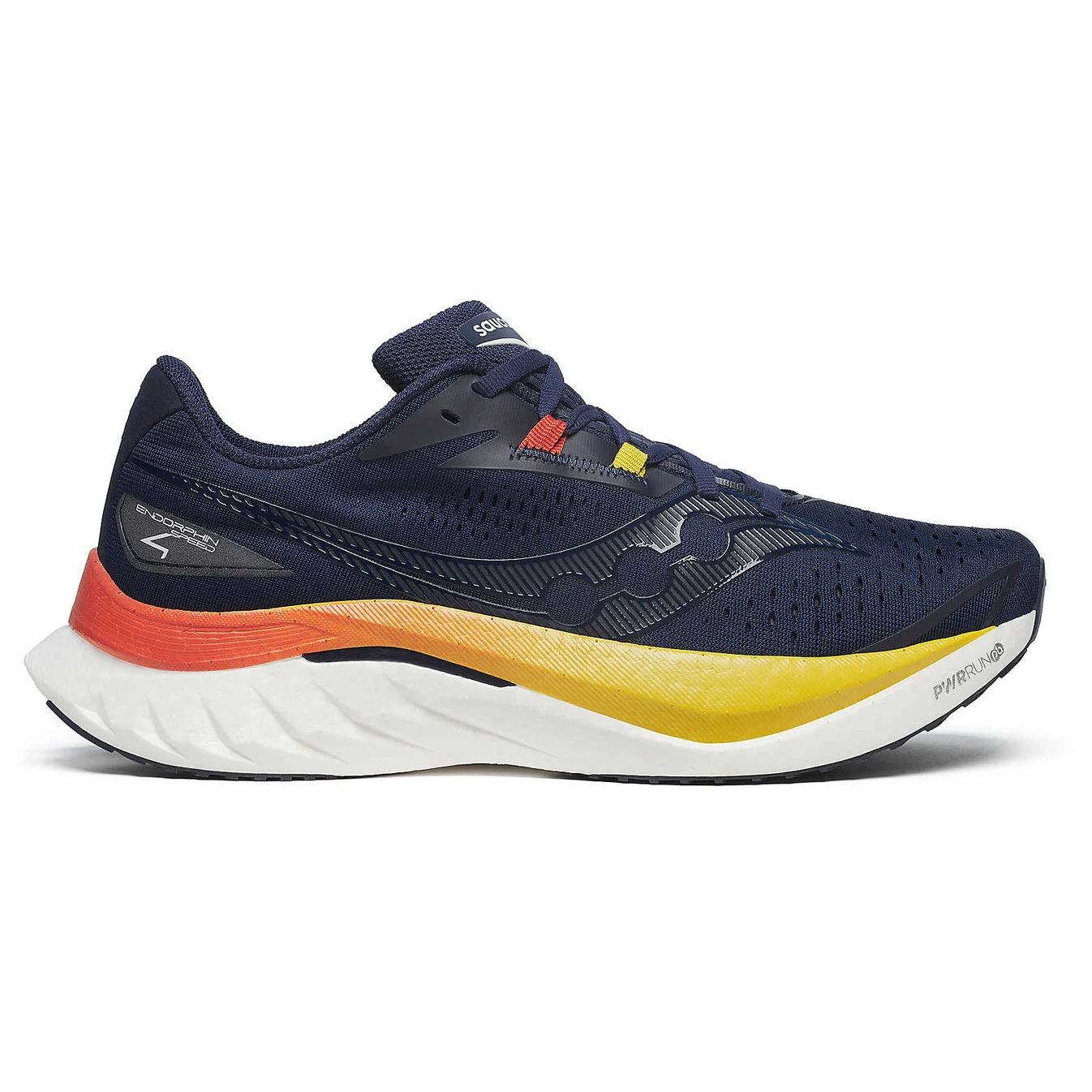
The best for fast sessions
This light shoe from Saucony reduces overall weight and therefore increases achievable speed. It's also fast and spring for shaving those seconds off your personal best.
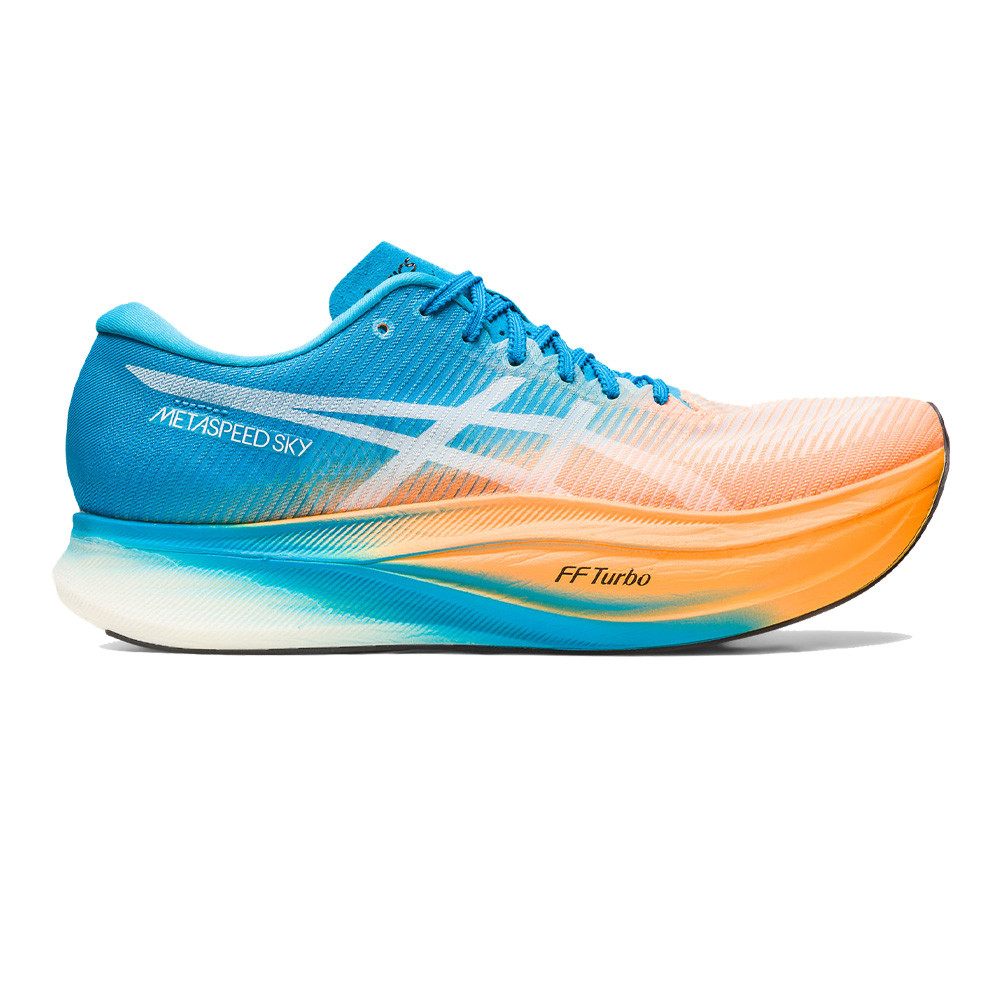
The best Nike alternative
A full-length carbon plate and curved design provide runners with the spring they need for ultimate performance. Runners are propelled forward with every step thanks to the responsive foam.
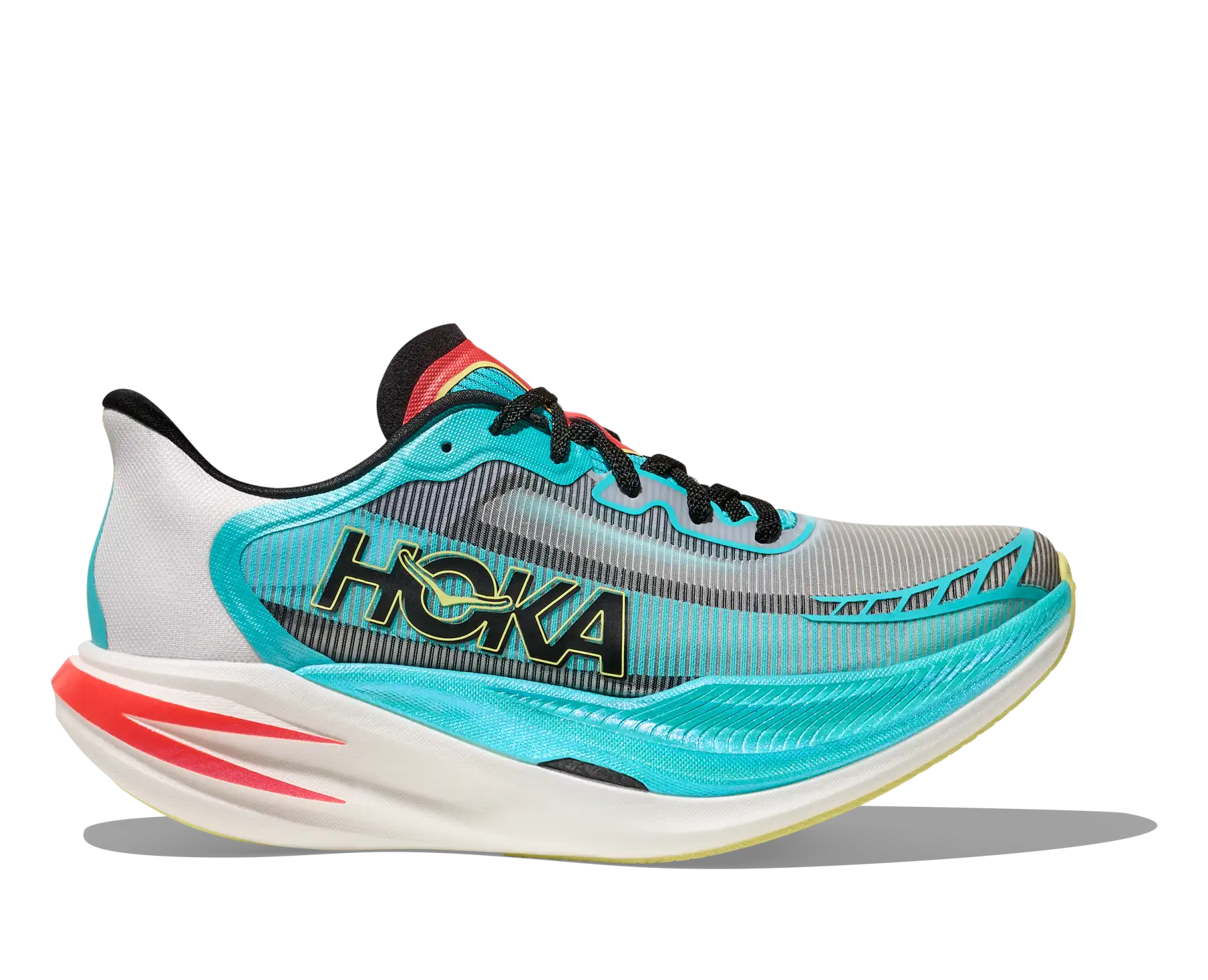 Best Rocker
Best Rocker
The best rocker
The HOKA Cielo X1 2.0 is a lightweight rocker shoe that will propel you forward as you run, perfect for speed and comfort.
Load the next product...
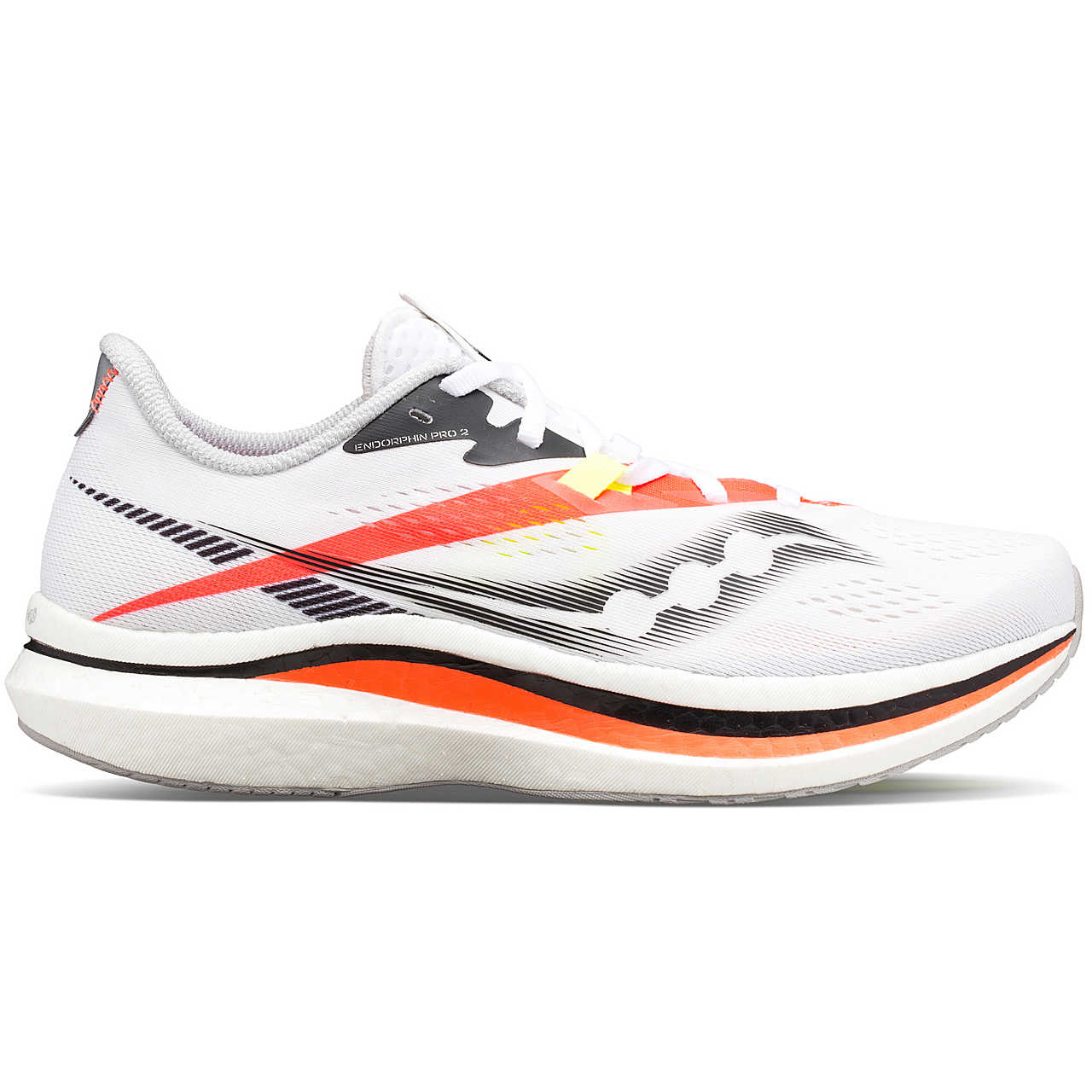
The best for pace
This shoe's SpeedRoll geometry and carbon plate propel you forward with every single step. The reduction in foam also increases overall durability.
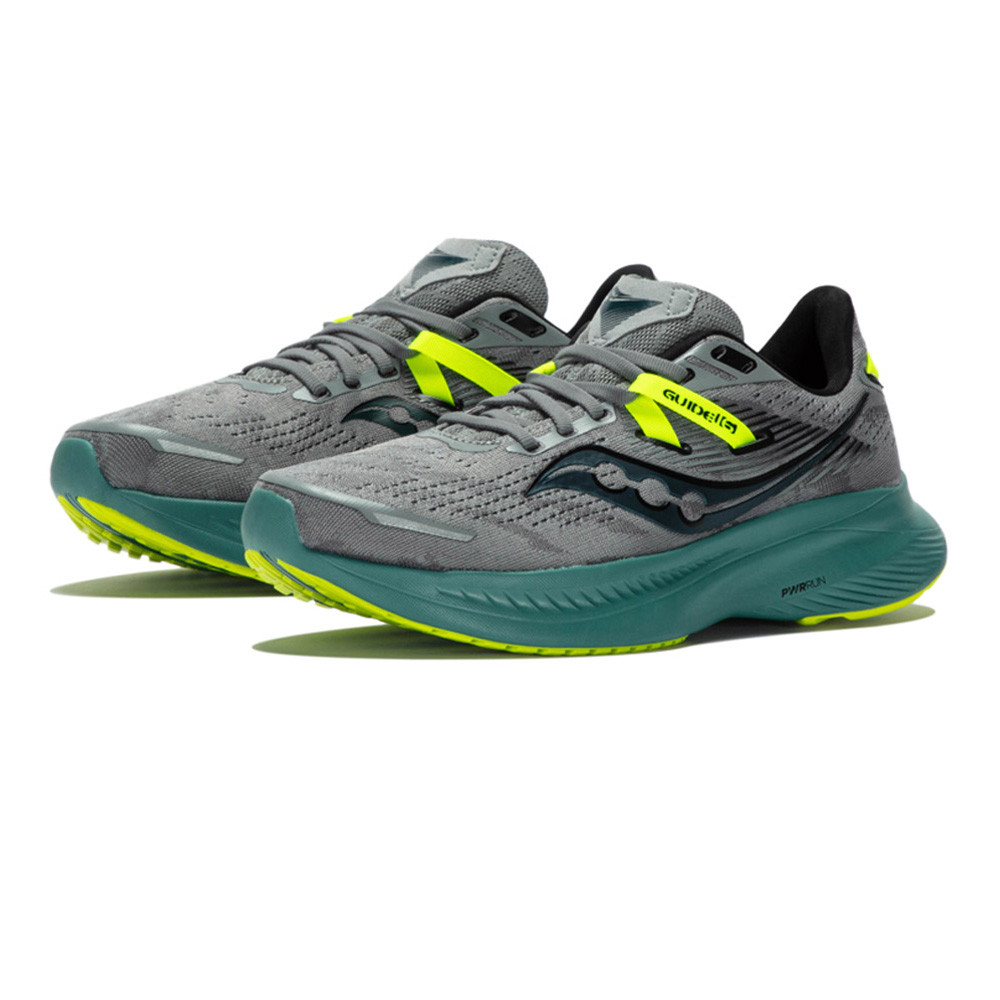
The best for unstable runners
Runners who overpronate will love the Guide 16 running shoes. The design provides extra stability even when you're body struggles to maintain good technique.
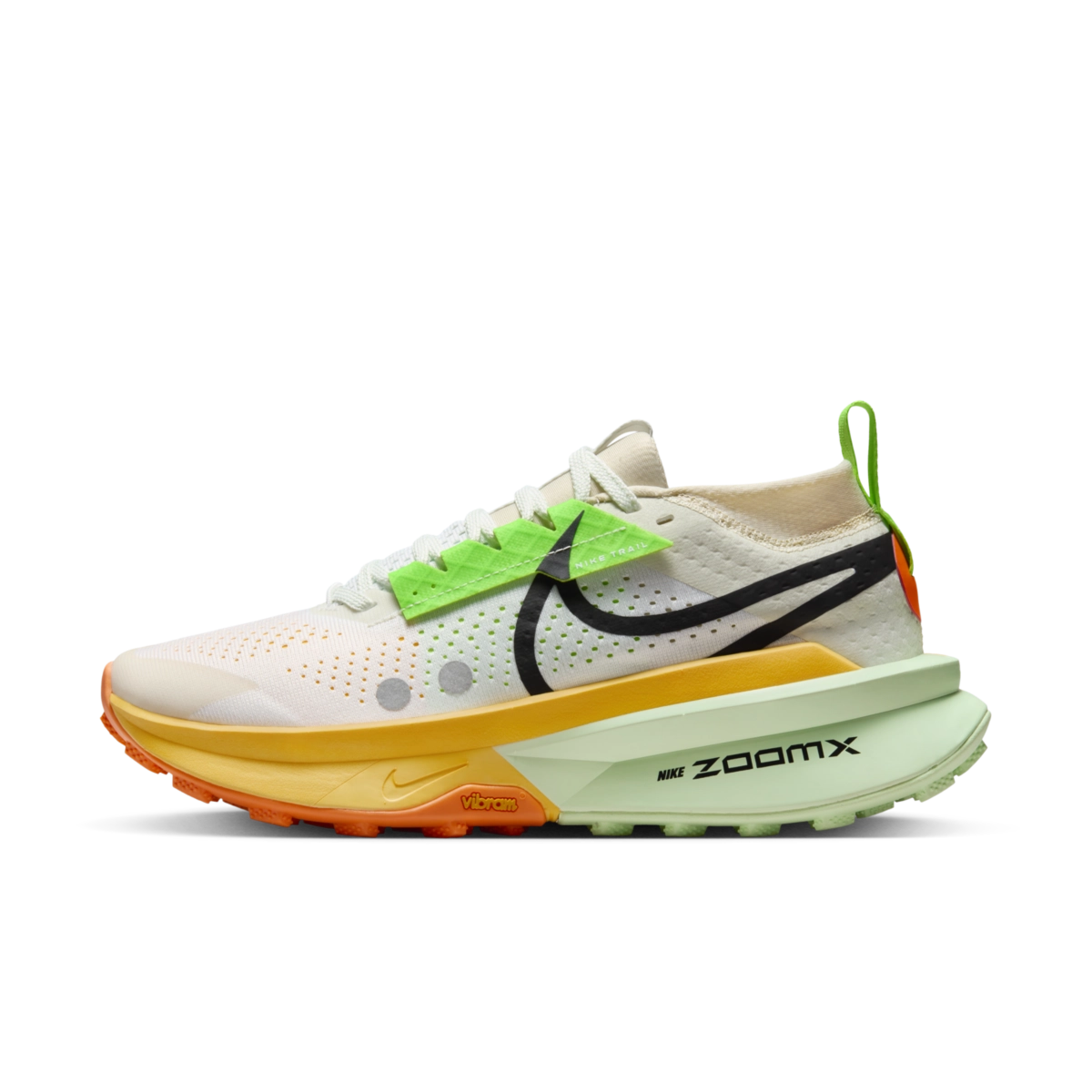 Best trail running shoe
Best trail running shoe
The trail running shoe
If you want a formidable trail shoe with a comfortable ride and durable design, it's hard to go wrong with Nike Zegama 2.
The best running shoe overall
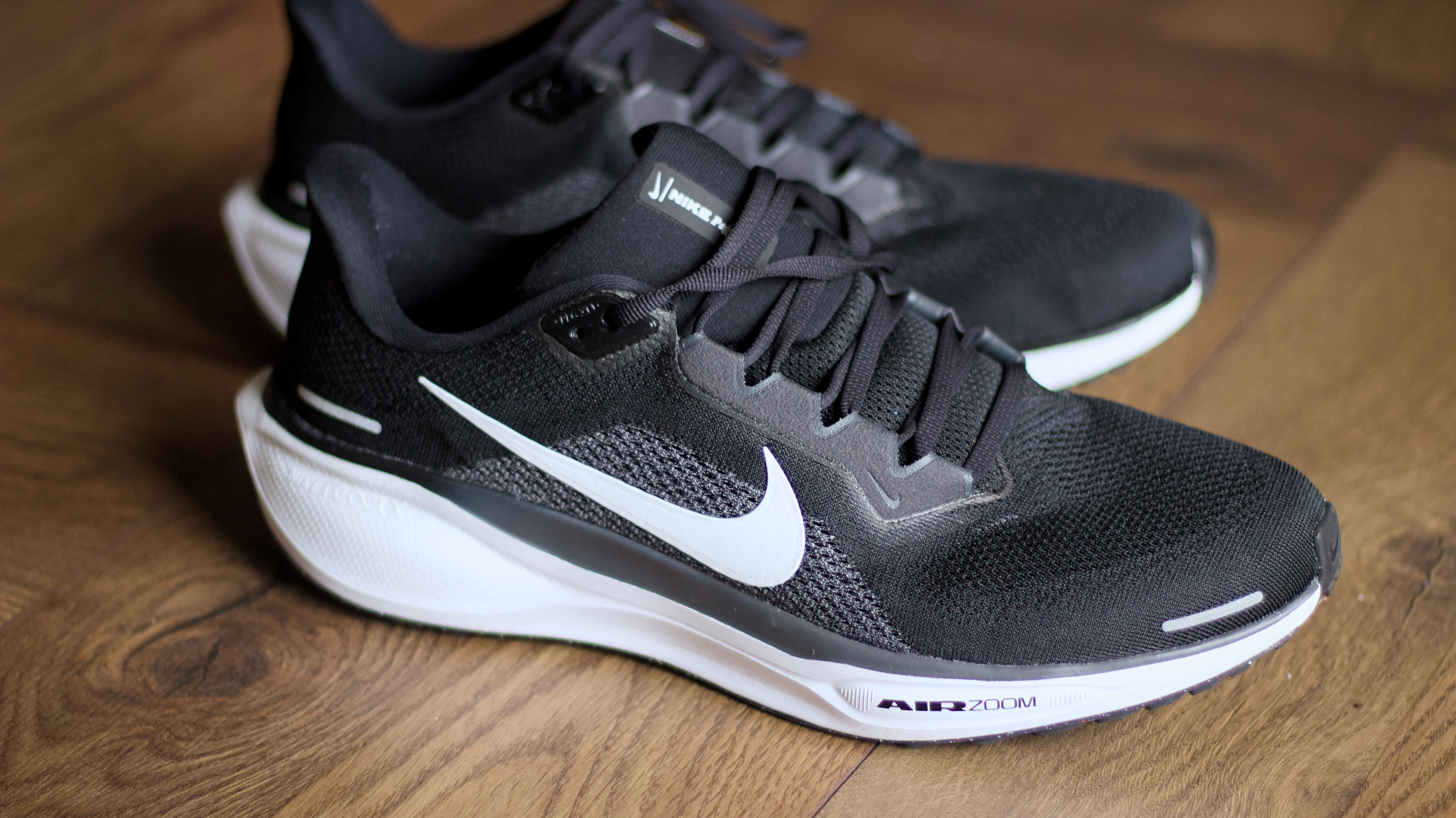
Specifications
Reasons to buy
Reasons to avoid
The Nike Pegasus 41 are some of the best all-around running shoes you can buy. They might not excel in any category, but they're extremely comfortable and look very cool. They're also relatively inexpensive, and come with Nike's ReactX foam for plenty of heel support.
They're not the fastest or lightest shoes on the market, but for most runners they're going to be perfect.
The Pegasus 41 is a brilliant middle distance trainer that can take plenty of punishment. Sturdy and rugged, this is the starting point I'd recommend for nearly everyone looking for a running shoe.
Read our full Nike Pegasus 41
Best running shoe for slower runs
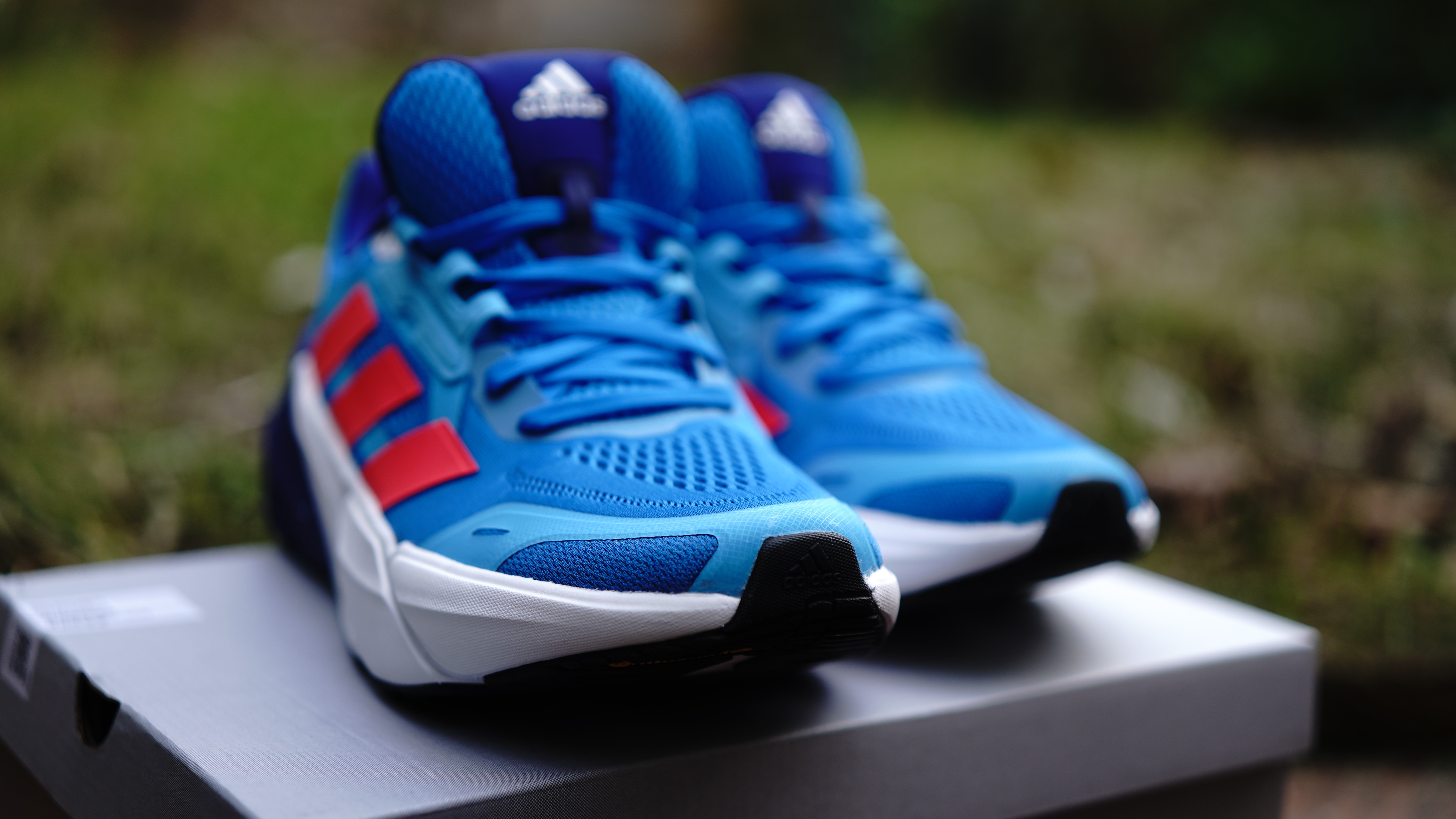
Specifications
Reasons to buy
Reasons to avoid
The Adidas Adistar impressed us with its well-designed rocker that keeps propelling you forward during long training sessions. It's not the lightest shoe we've ever tested, but its dual-density foam is tough and resilient, standing up well even after some serious mileage.
We also liked the shoe's integrated cage system, which gives this running shoe a snug and comfortable fit. The upper is made of recycled ocean plastic and recycled polyester, which is also welcome from a sustainability standpoint.
Overall the Adidas Adistar is an excellent running shoe for those long, slow sessions and will help you maintain your form when your mind begins to wander, and you're running on autopilot. Even after several hours, the shoes don't feel sluggish, and the rocker design means you're unlikely to drag your feet despite the shoes' stack height.
Read our full Adidas Adistar review
Best running shoe for long runs
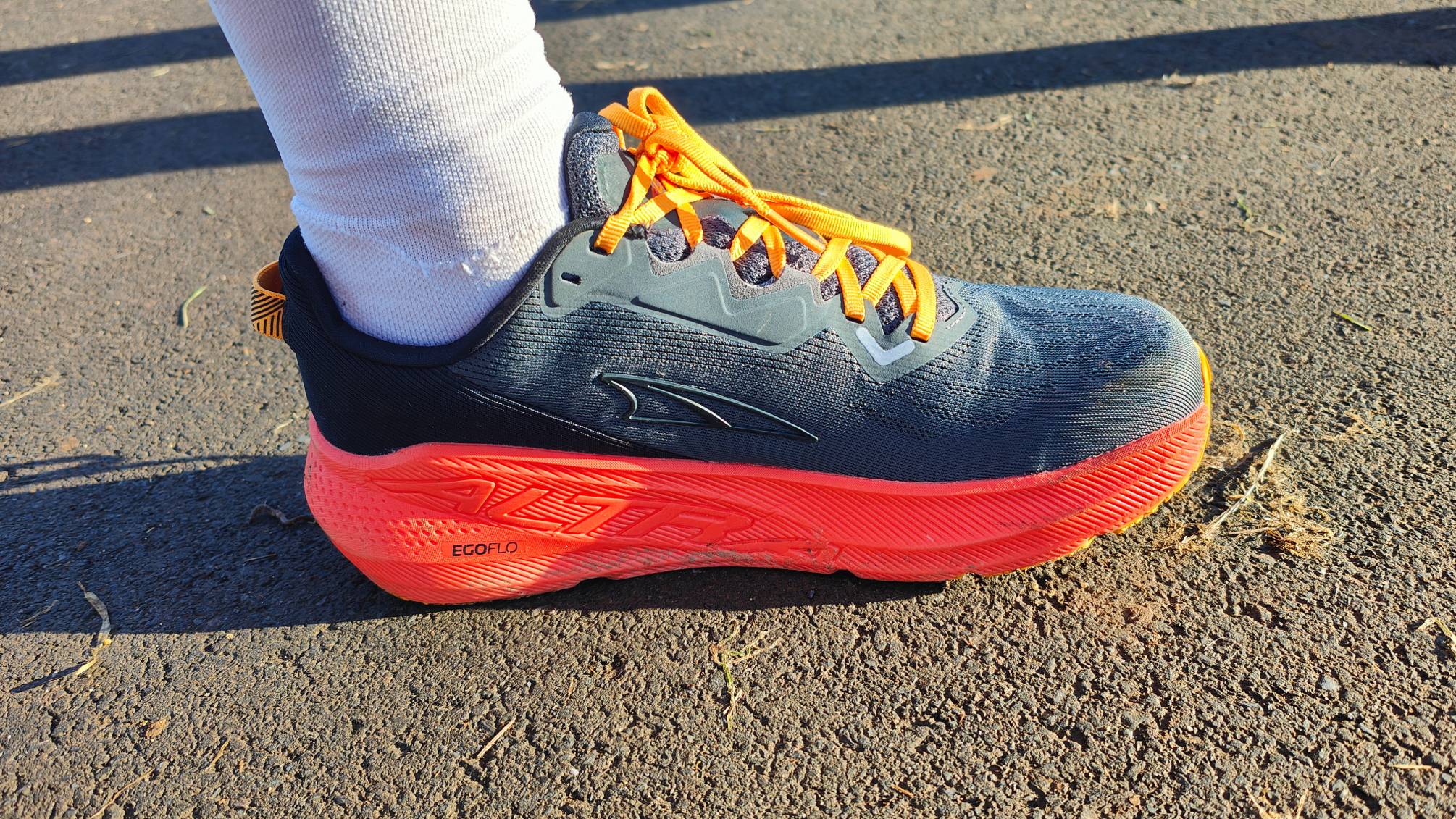
Specifications
Reasons to buy
Reasons to avoid
The Altra FWD Via are a large and chunky everyday shoe with a very comfortable profile, rocker motion, and wide toebox.
You won't find any carbon plates or zippy response here, they're definitely not a fast shoe for energy return. However, they propel you forward and are extremely comfortable for long runs. As we noted in our review they're very light on the feet and make running an easy pace a doddle. This is one of the best shoes out there for easy Sunday runs or slow recovery sessions.
It's definitely not an all-rounder and would be wasted on anyone not running more than five miles at a time. But if you want a slightly different and chunkier long run shoe, the Altra FWD Via might be the one for you.
Read our full Altra FWD Via review
Best running shoe for fast sessions
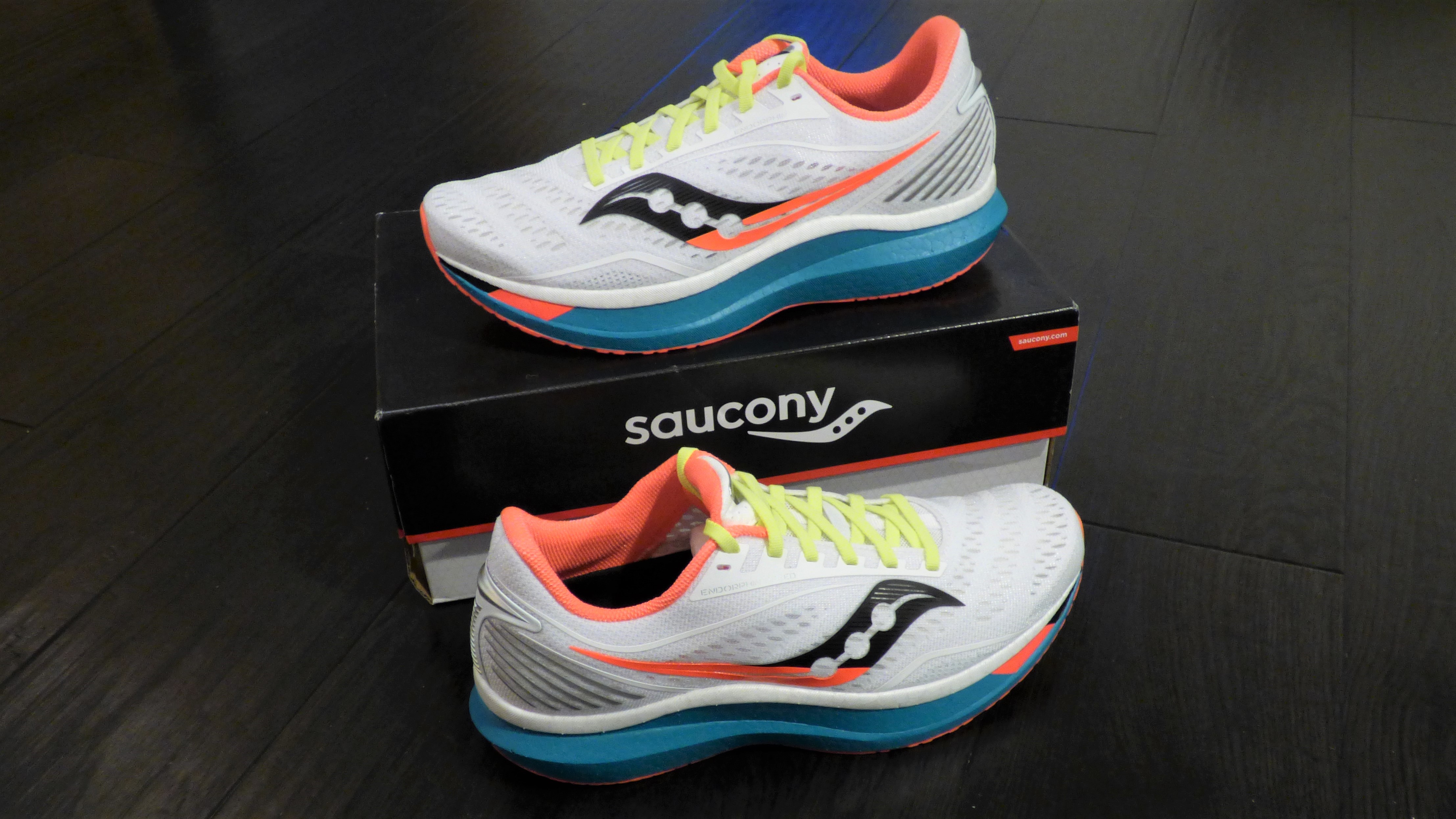
Specifications
Reasons to buy
Reasons to avoid
If you've fallen out of love with running recently, the Saucony Endorphin Speed could be the best running shoe to rekindle your passion for the pavement.
This is a neutral motion-control shoe, meaning it isn't designed to prevent the twisting motion of overpronation but does help your foot roll and transfer energy more effectively thanks to a nylon plate in the midsole. The result is a springy, fun (but not bouncy) feel with each step.
It's an exceptionally light shoe, and Saucony has pared down the design as much as possible to shave off extra grams. We can't guarantee that it'll help you hit a new personal best in your next race, but we wouldn't be surprised.
Read our full Saucony Endorphin Speed review
Best Nike running shoe alternative
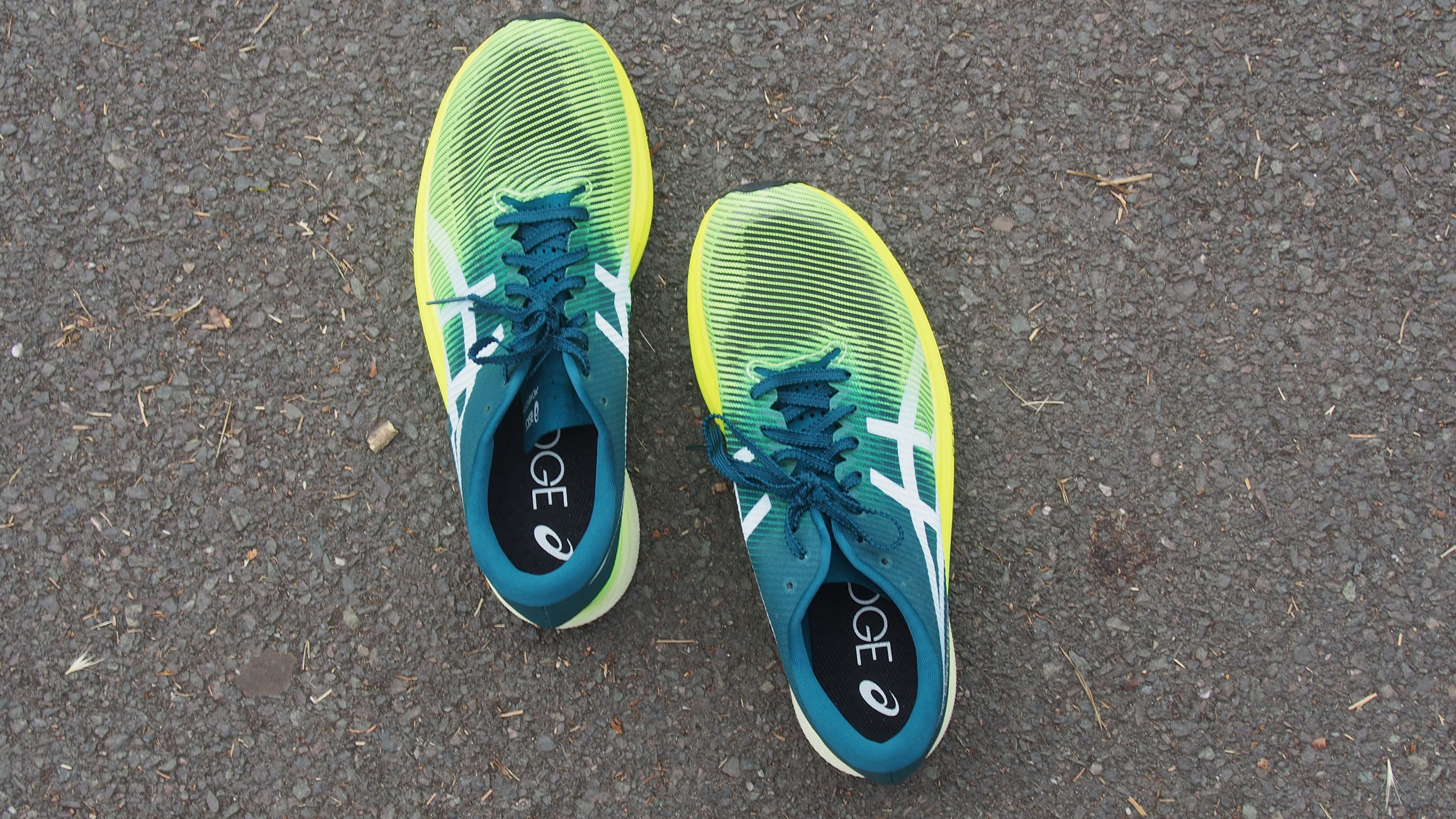
Specifications
Reasons to buy
Reasons to avoid
If you're looking for a race shoe that's a great alternative to what Nike and Adidas currently have to offer, the Asics Metaspeed Sky Plus is well worth your consideration. It's a running shoe built to keep you quick over short and long distances
When we reviewed the Metaspeed Sky, we appreciated the spring provided by the full-length carbon plate and curved design, together with the shoe's lightweight, responsive foam. It compresses at each footstrike before springing back into shape, giving a controlled feel while propelling you forward.
It's pricier than the Nike ZoomX Vaporfly Next% 2 above, and it does have its predecessor's issues with durability in the heel, but it's a superb shoe nonetheless and feels great to run in.
Read our full Asics Metaspeed Sky Plus review
Best rocker running shoe
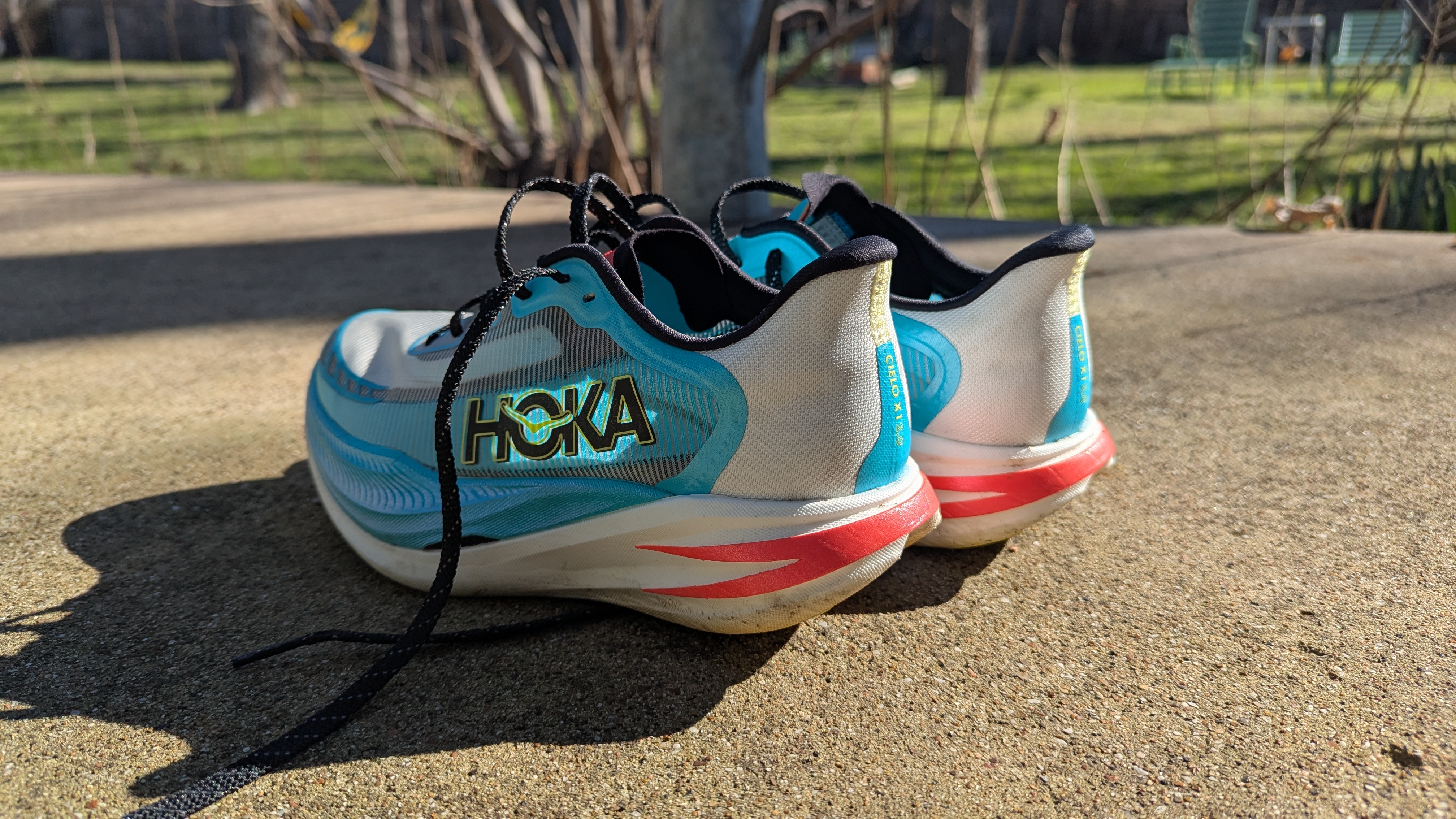
Specifications
Reasons to buy
Reasons to avoid
The HOKA Cielo X1 2.0 is a lightweight rocker shoe that will propel you forward for effortless, lightweight running at speed.
Rocker shoes can help alleviate feet and ankle pain, gently rocking you forward using the natural shape of the sole. We loved how breathable the Cielo was in testing, and enjoyed its light weight plus its plush and supportive upper. They're a little narrower and on the pricey side, but for those who want to stretch their legs and get some faster times in these Cielo X1's are a dream.
At any speed or distance, these shoes will help you run faster and more efficiently.
Read our full HOKA Cielo X1 2.0
Best running shoe for pace
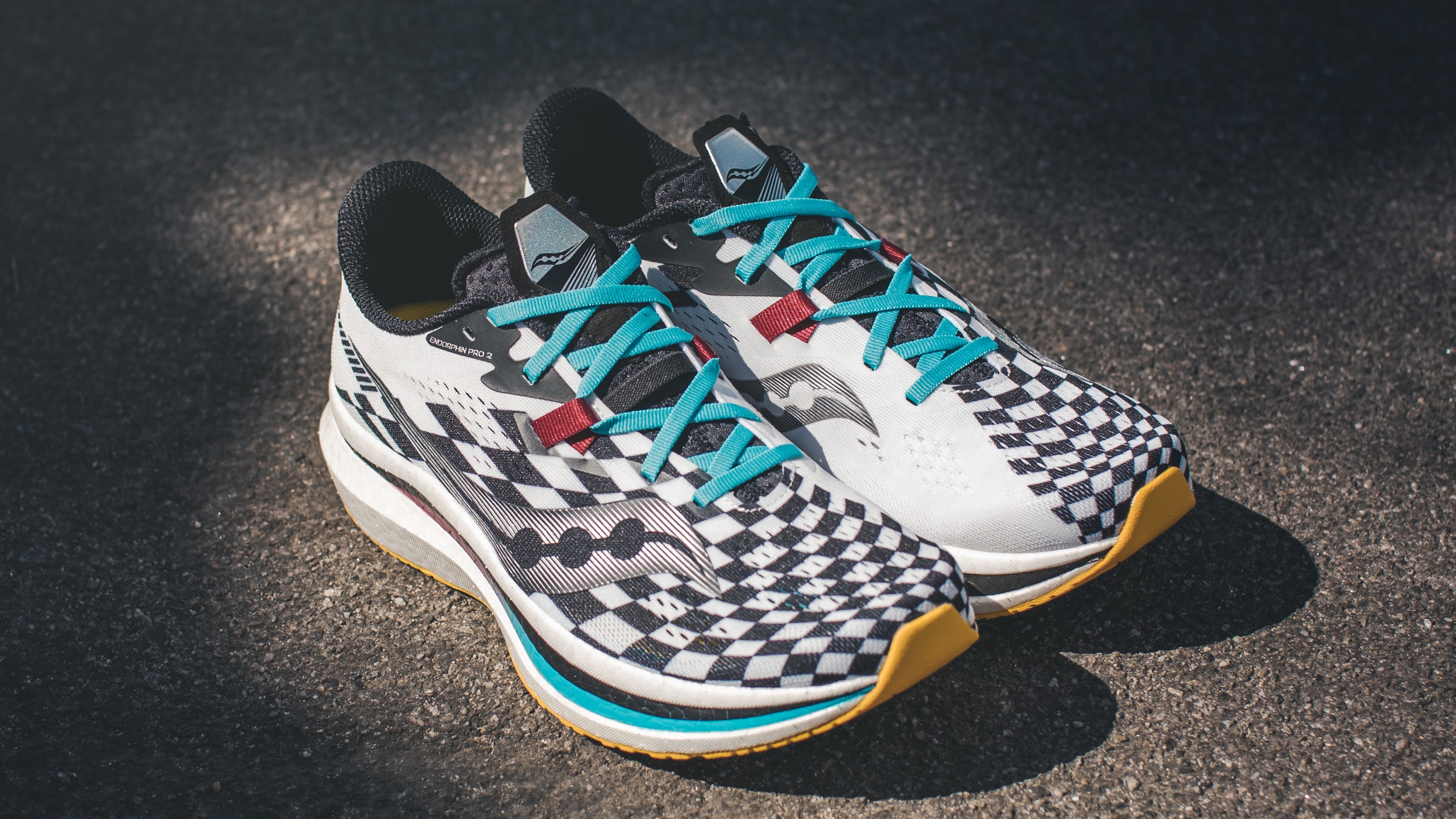
Specifications
Reasons to buy
Reasons to avoid
Sitting in between the Hoka One One Bondi X and the Asics Metaspeed Sky listed above, the Saucony Endorphin Pro 2 is a versatile carbon plate running shoe that works well at a variety of distances – particularly training sessions at a race pace.
It might feel odd at first, but once you pick up speed, you'll feel the benefit of that plate together with the shoe's SpeedRoll geometry, which propels you forward with each step. There's also less exposed foam than you'll find on many performance shoes, which lends some welcome durability.
The chief downside of this road running shoe is its price; at $200 / £190 / AU$319.99, it's pretty steep. If cash is tight and you're in the market for more of a daily shoe, take a look at the Saucony Endorphin Speed 2 instead; its use of nylon in place of carbon gives a similarly lively ride while keeping costs down.
Read our full Saucony Endorphin Pro 2 review
Best running shoe for overpronation
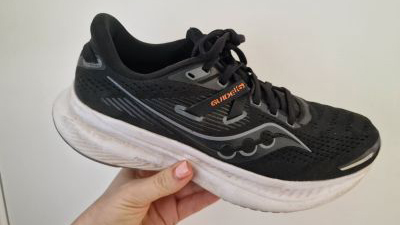
Specifications
Reasons to buy
Reasons to avoid
The Saucony Guide 16 is our top pick if you overpronate and need some added stability when you run. Then again, if you don't have any particular issues with the way you run, we recommend these shoes for any runner who wants to feel secure as they complete their miles.
It's rare that running trainers are comfortable from the get-go, usually needing a few miles to break them in. But during our testing, we were pleasantly surprised to find that this shoe is incredibly comfortable. As soon as you lace the trainers up, their foam tech ensures you have a cushioned run. They're also incredibly lightweight at 221g, meaning you won't be carrying too much extra weight as you attempt a new PB in them.
Unfortunately, these Saucony trainers aren’t waterproof, which is disappointing and means we wouldn't recommend them for trails. However, they are a great everyday running shoe that we think is ideal for 5 and 10k runs.
Read our full Saucony Guide 16 review
Best trail running shoe
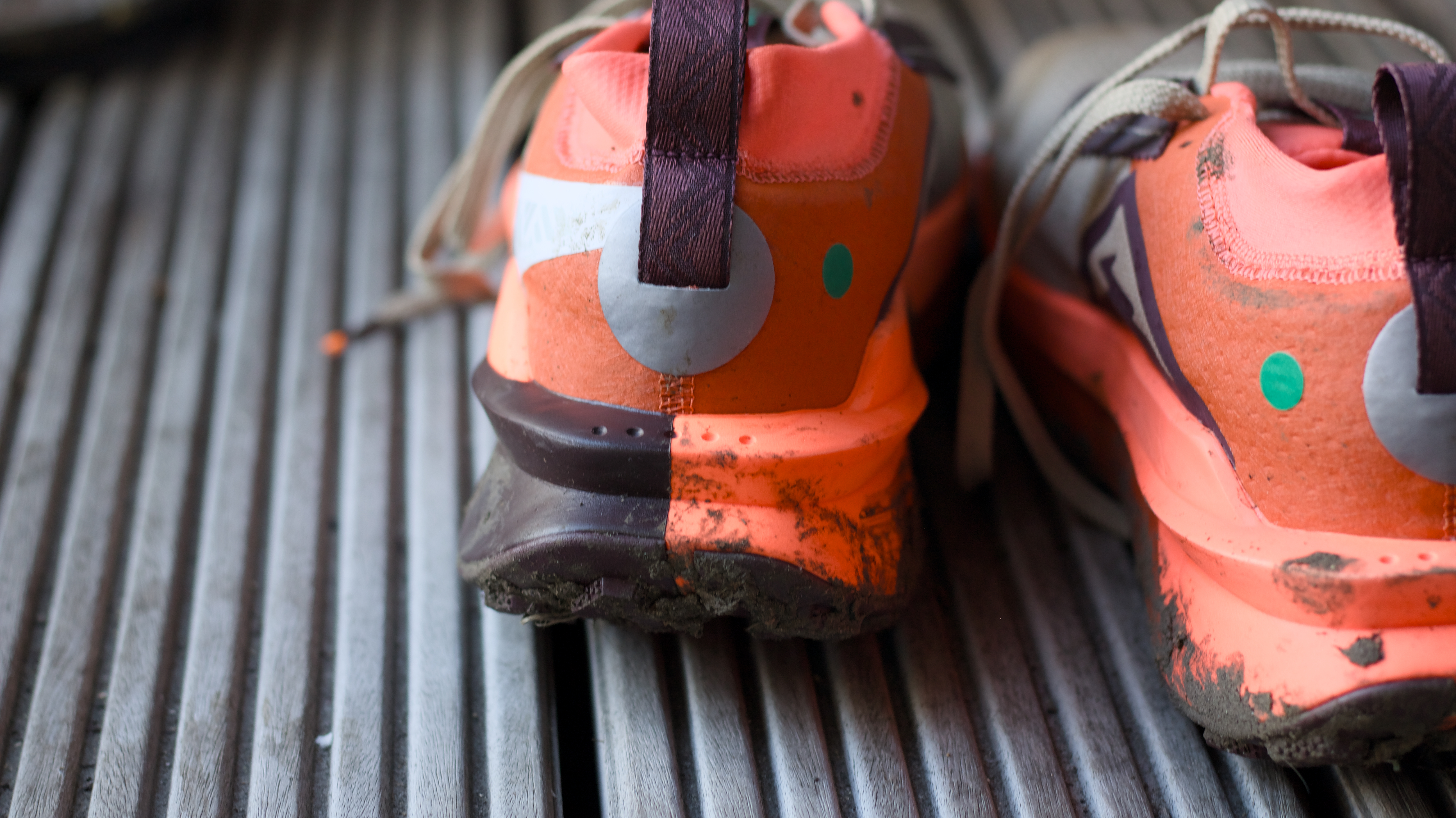
9. Nike Zegama 2
Our expert review:
Specifications
Reasons to buy
Reasons to avoid
If you want an excellent trail running shoe then you can't go far wrong with the Nike Zegama 2.
We absolutely love the Zegama 2's very comfortable and forgiving ride. The trainer screams durability and has a striking design, as well as a series of head-turning colorways.
They're very stable and come with a grippy new outsole to provide better traction than the previous model.
Like many trail shoes they're on the heavier side, and the substantial heel won't be for everyone, but if you want a well-designed and extremely durable trail shoe for running on the soft stuff then look no further.
Read our full Nike Zegama 2 review
How to choose the best running shoes for you
Why you can trust TechRadar
First and foremost, you should be looking at what kind of distances you like (or aspire) to run. Are you looking to improve your 5k time? Or perhaps you're working your way up to a marathon? That will dictate what kind of shoe you'll buy: how much cushioning you'll need, for example, and how much energy return you get from each step.
Once you have a distance in mind, you should consider your budget. If none of these shoes fit your pocket, it's worth going to a running store or an expert and doing some research online, using your ideal shoe from this list as a touchstone. You'll likely be able to find a shoe tailored to the same distance for a lower price point, such as an older model in the range.
Finally, remember to keep an eye on how many miles you run. After a few hundred miles, your shoes will need to be replaced. The general rule of thumb is that running shoe foam lasts for 3-400 miles, although some newer foams are challenging this, such as Kiprun's VFOAM that's said to have a 600-mile lifescycle.
Is it OK to wear running shoes for walking?
Some running shoes are well-suited for walking, especially ones with short stack height and a shallower heel-to-toe drop, or drop for short. Generally speaking, running shoes geared towards racing aren't good for running as they are designed to move you forward as fast as you can, and often have embedded propulsion plates (e.g. carbon plate) in the foam.
How we test
Every shoe is run on the road at least several times, with each test run tailored to the distance the shoe is made for. Yes, that means we've covered a lot of ground, but there's just no other way to test the shoe.
We look at how the shoe responds in its environment, how the sole responds and the kind of energy returns you get, and whether you get any wear-and-tear on the sole unnaturally quickly. We also check out the upper's fit around our foot, whether it's breathable, and how comfortable the ride really is.
Get daily insight, inspiration and deals in your inbox
Sign up for breaking news, reviews, opinion, top tech deals, and more.

Matt is TechRadar's expert on all things fitness, wellness and wearable tech.
A former staffer at Men's Health, he holds a Master's Degree in journalism from Cardiff and has written for brands like Runner's World, Women's Health, Men's Fitness, LiveScience and Fit&Well on everything fitness tech, exercise, nutrition and mental wellbeing.
Matt's a keen runner, ex-kickboxer, not averse to the odd yoga flow, and insists everyone should stretch every morning. When he’s not training or writing about health and fitness, he can be found reading doorstop-thick fantasy books with lots of fictional maps in them.